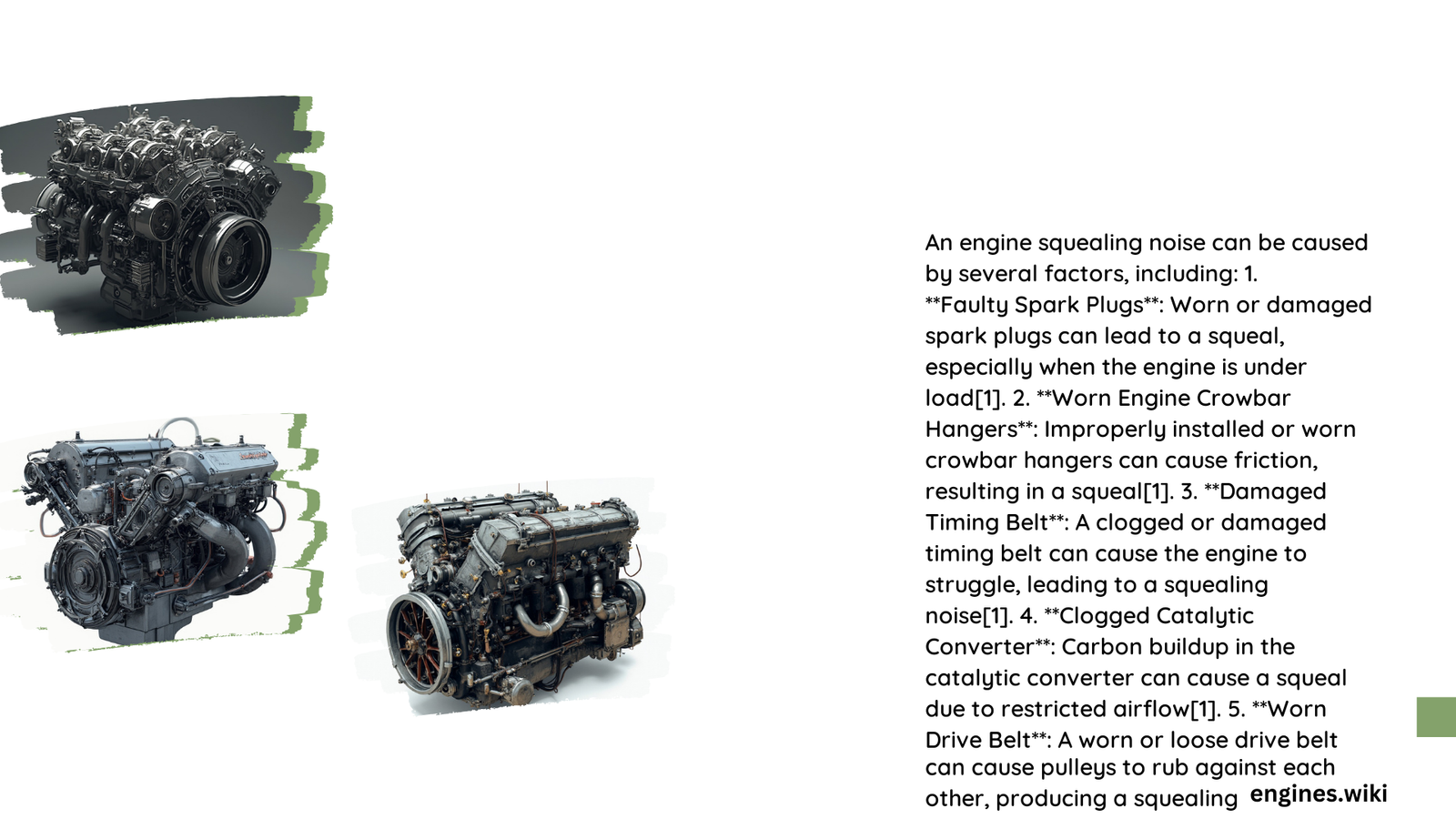Engine squealing noise can be a distressing and potentially serious automotive issue that signals underlying mechanical problems. This persistent, high-pitched sound often indicates wear, misalignment, or damage in critical engine components, ranging from drive belts and pulleys to power steering systems. Understanding the precise origin of these sounds is crucial for preventing more extensive and expensive repairs.
What Causes Engine Squealing Noise?
Why Do Belts Cause Squealing?
Drive belts are primary culprits in engine squealing scenarios. As rubber components age, they become:
– Brittle
– Stretched
– Cracked
– Prone to slipping
Belt Wear Indicators:
| Condition | Potential Issue | Recommended Action |
|———–|—————-|———————|
| Surface Glazing | Oil Contamination | Inspect for Leaks |
| Visible Cracks | Advanced Wear | Immediate Replacement |
| Frayed Edges | Tension Problems | Adjust Belt Tension |
How Can Pulley Problems Create Noise?
Pulley issues manifest through:
1. Worn bearings
2. Misalignment
3. Excessive play during rotation
Diagnostic Techniques for Pulley Inspection
- Use automotive stethoscope
- Manually rotate pulleys
- Check for lateral movement
- Listen for grinding or squeaking sounds
What Role Do Fluid Levels Play?
Low fluid levels, particularly in power steering systems, can trigger squealing noises. Critical fluid-related factors include:
– Power steering fluid volume
– Hydraulic system pressure
– Lubrication of moving components
Uncommon Noise Sources
While belts and pulleys are primary suspects, other potential causes include:
– Faulty spark plugs
– Damaged timing belt
– Clogged catalytic converter
– Worn belt tensioners
Comprehensive Troubleshooting Strategy

Tools Required for Diagnosis
- Professional automotive stethoscope
- Socket set
- Torque wrench
- Multimeter
- Flashlight
Step-by-Step Diagnostic Process
- Initial Sound Localization
- Run engine
- Identify noise origin
-
Note specific conditions triggering sound
-
Visual Component Inspection
- Check belt condition
- Examine pulley alignment
-
Look for visible damage
-
Detailed Component Testing
- Measure belt tension
- Test fluid levels
- Assess bearing movement
Repair Recommendations
Cost and Time Estimates for Repairs
| Repair Type | Estimated Cost | Average Time |
|---|---|---|
| Belt Replacement | $50 – $200 | 30-60 minutes |
| Pulley Bearing Fix | $100 – $500 | 1-2 hours |
| Fluid System Repair | $50 – $300 | 30-90 minutes |
Professional vs. DIY Approach
When to DIY:
– Minor belt replacements
– Fluid level checks
– Basic visual inspections
When to Seek Professional Help:
– Complex pulley repairs
– Timing belt replacement
– Advanced diagnostic needs
Prevention and Maintenance Tips
- Regular visual inspections
- Maintain proper fluid levels
- Address unusual sounds immediately
- Follow manufacturer’s maintenance schedule
Final Recommendations
Engine squealing noise should never be ignored. Prompt diagnosis and repair can prevent:
– Catastrophic engine failure
– Expensive component replacement
– Potential roadside breakdowns
References:
– Barry’s Auto Body
– Carr Chevrolet
– Nate Wade Automotive
